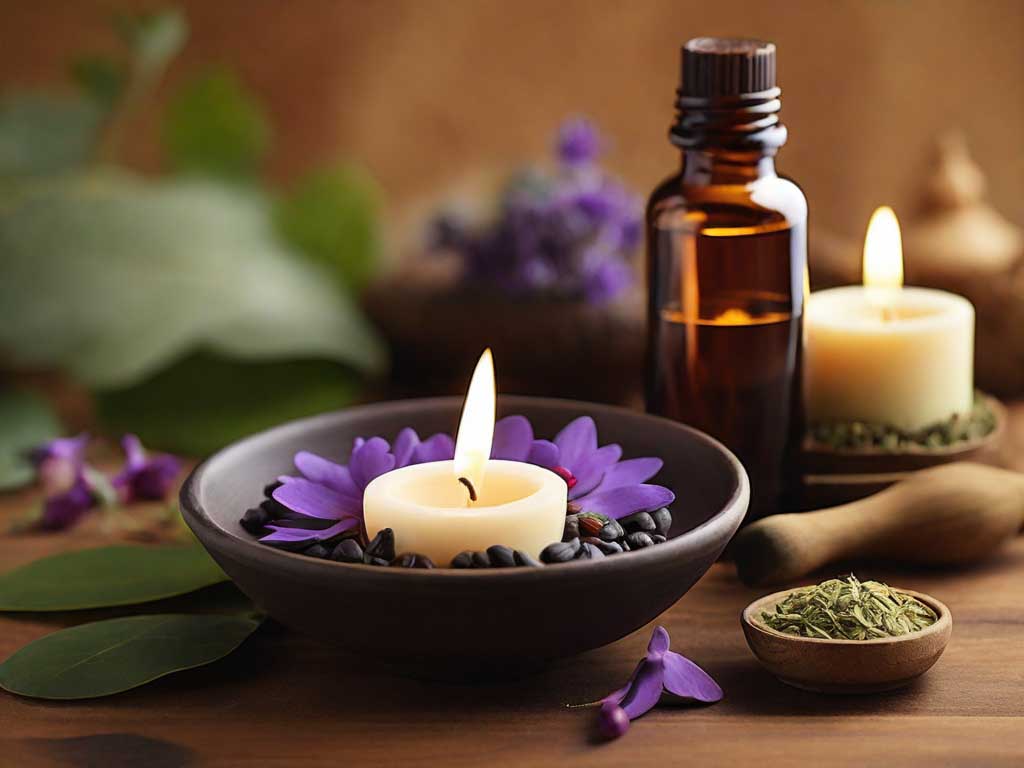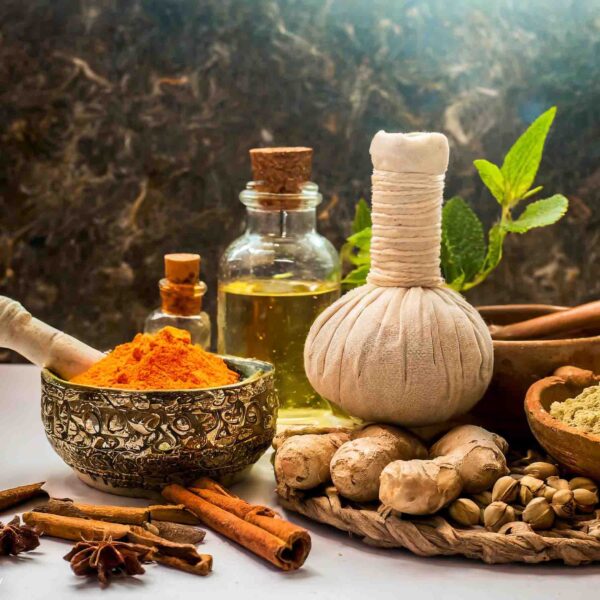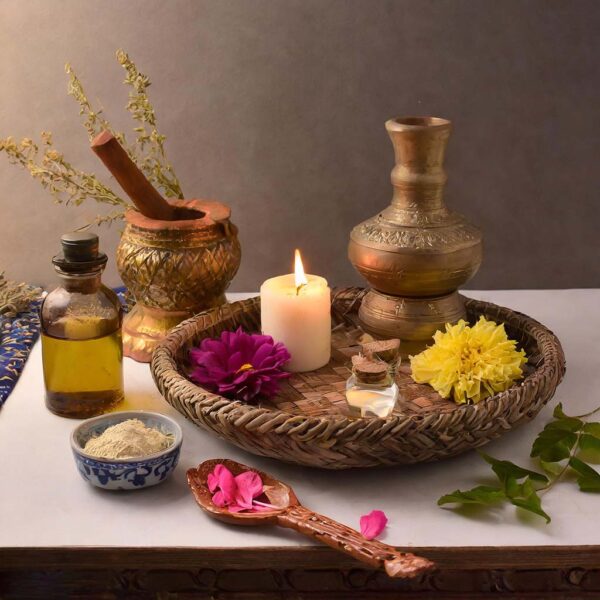
Pitta Pacifying With Aromatherapy Techniques: Cooling the Fire Element with Aromatherapy in Ayurveda for Optimal Balance and Wellness – 4 Essential Tips
Prelude:
In Ayurveda, Pitta represents the fire and water elements, governing qualities of intensity, ambition, and transformation. When Pitta becomes imbalanced, individuals may experience irritability, inflammation, and digestive issues. Aromatherapy offers natural remedies to pacify Pitta dosha, promoting a sense of calm and balance. This article explores pitta pacifying with aromatherapy techniques, DIY recipes, and the importance of incorporating these practices into daily life for holistic well-being.
Understanding Pitta Imbalance:
Pitta imbalance, a common occurrence in Ayurvedic practice, manifests in various forms, often affecting both physical and emotional well-being. Skin irritations, ranging from rashes to acne, are typical indications of Pitta aggravation. The skin, being the largest organ of the body, reflects imbalances within, and Pitta’s fiery nature can lead to inflammation and sensitivity, exacerbating conditions such as eczema and psoriasis.
Additionally, Pitta imbalance frequently manifests in digestive disturbances, notably acid reflux. Pitta governs the digestive fire, responsible for metabolizing food and ensuring proper assimilation of nutrients. When Pitta is heightened, excessive heat can accumulate in the digestive tract, leading to acid reflux, heartburn, and other gastrointestinal issues. This discomfort not only affects physical health but also contributes to emotional instability, as chronic digestive issues can disrupt one’s overall sense of well-being.
Moreover, Pitta imbalance can manifest as heightened feelings of anger, irritability, and frustration. Pitta’s fiery energy, when imbalanced, can result in emotional volatility and impatience. Stress, a common trigger for Pitta aggravation, further exacerbates these emotional imbalances, creating a cycle of tension and irritability.
Fortunately, pitta pacifying with aromatherapy techniques offers a gentle yet effective approach to address these symptoms and restore balance to Pitta dosha. Essential oils possess unique therapeutic properties that can help pacify Pitta’s fiery nature and promote a sense of calm and equilibrium. Cooling oils such as peppermint, chamomile, and lavender can soothe inflammation, both externally and internally, providing relief from skin irritations and digestive discomfort.
Moreover, aromatherapy has a profound impact on emotional well-being, helping to alleviate feelings of anger and irritability. Calming essential oils such as sandalwood, rose, and neroli can soothe the nervous system, promoting emotional balance and resilience in the face of stress and tension.
By incorporating pitta pacifying with aromatherapy techniques into their daily routines, individuals can harness the healing power of nature to restore balance to Pitta dosha, promoting both physical and emotional well-being. Whether through massage, inhalation, or topical application, aromatherapy offers a holistic approach to addressing Pitta imbalance and supporting overall health and vitality.
Pitta Pacifying with aromatherapy Techniques:
- Cooling Body Oil:
- Ingredients:
- 2 tablespoons of coconut oil
- 5 drops of rose essential oil
- 3 drops of jasmine essential oil
- Directions:
- Mix the coconut oil with rose and jasmine essential oils in a small container.
- Massage the oil onto your body, focusing on areas of heat and inflammation.
- Use this cooling body oil daily to soothe Pitta-related skin irritations and promote relaxation.
- Ingredients:
- Pitta-Balancing Bath Blend:
- Ingredients:
- 1 cup of sea salt
- 5 drops of peppermint essential oil
- 3 drops of chamomile essential oil
- Directions:
- Combine the sea salt with peppermint and chamomile essential oils in a bowl.
- Add the bath blend to warm bathwater and soak for 20 minutes to cool and calm Pitta-related irritations and tension.
- Ingredients:
- Aromatic Room Spray:
- Ingredients:
- 2 ounces of distilled water
- 1 tablespoon of witch hazel
- 10 drops of lavender essential oil
- 7 drops of sandalwood essential oil
- Directions:
- Mix the distilled water with witch hazel in a spray bottle.
- Add lavender and sandalwood essential oils to the bottle and shake well.
- Use the aromatic spray to create a calming atmosphere and alleviate Pitta-related stress and irritability.
- Ingredients:
- Pitta-Soothing Roll-On:
- Ingredients:
- 1 tablespoon of almond oil
- 3 drops of peppermint essential oil
- 3 drops of vetiver essential oil
- 2 drops of neroli essential oil
- Directions:
- Combine almond oil with peppermint, vetiver, and neroli essential oils in a roll-on bottle.
- Apply the roll-on to pulse points such as wrists and temples to cool Pitta-related tension and promote emotional balance.
- Ingredients:
Why Incorporate These Techniques into Daily Life?
Incorporating pitta pacifying with aromatherapy techniques into daily life offers a myriad of benefits that extend beyond mere symptom relief. By embracing these practices as part of a holistic self-care regimen, individuals can experience profound transformations in their overall well-being, both physically and emotionally.
Firstly, these techniques provide effective relief from symptoms associated with Pitta imbalance, such as inflammation and irritability. Aromatherapeutic oils possess unique properties that help to cool the fiery nature of Pitta, soothing skin irritations, calming digestive discomfort, and alleviating emotional tension. By addressing these symptoms at their root, aromatherapy offers holistic support for individuals seeking relief from Pitta-related discomforts.
Moreover, incorporating aromatherapy into daily life promotes emotional balance and resilience, making it an invaluable tool for managing stress and promoting relaxation. The soothing aromas of essential oils have a direct impact on the limbic system, the part of the brain responsible for emotions and memory. By inhaling these calming scents, individuals can reduce feelings of anxiety, tension, and irritability, fostering a greater sense of inner peace and well-being.
Furthermore, integrating aromatherapy into daily self-care routines such as massage, bathing, and room sprays encourages mindfulness and presence in the present moment. These practices offer opportunities for individuals to cultivate a deeper connection with their bodies, minds, and emotions, fostering a greater sense of self-awareness and self-love. By prioritizing their well-being through regular aromatherapy rituals, individuals can nurture a positive relationship with themselves and cultivate a greater sense of calm, resilience, and vitality in their daily lives.
In essence, incorporating pitta pacifying with aromatherapy techniques into daily life offers a holistic approach to well-being that addresses the root causes of imbalance while promoting relaxation, emotional balance, and self-awareness. By embracing these practices with intention and mindfulness, individuals can cultivate a greater sense of harmony and vitality in their lives, leading to a more fulfilling and balanced existence.
Conclusion:
Pitta pacifying with aromatherapy techniques provides a natural and holistic approach to promoting well-being on physical, mental, and emotional levels. By incorporating techniques such as body oils, bath blends, room sprays, and roll-ons into daily life, individuals can nurture their Pitta dosha and cultivate a deeper sense of calm, balance, and harmony. Embrace the power of aromatherapy to cool the fire of Pitta energy and enhance your journey towards optimal health and vitality.



